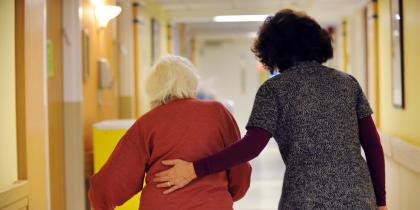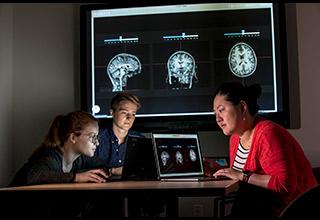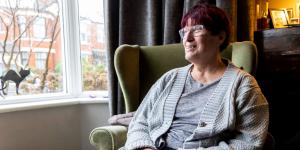The Concerning New Trend in Osteoporosis Treatment
Too many are eschewing osteoporosis treatment and risking fatal injury

For thirty years, the incidence of hip fractures in older adults had been in decline. That is, until recently. Since 2012, that number has hit a plateau, which is very concerning to Dr. Douglas P. Kiel, Director of the Musculoskeletal Research Center at Hebrew SeniorLife’s Hinda and Arthur Marcus Institute for Aging Research. According to Dr. Kiel, “By 2050, the worldwide incidence of hip fracture is projected to increase by 310% in men and 240% in women compared to rates in 1990.”
This is a problem that has implications much larger than a fracture. American seniors suffer 250,000 hip fractures a year. Many of those fractures - up to 24%, are fatal. For those who survive, 50% are permanently incapacitated, and 20% require long-term nursing home care.
Worldwide, osteoporosis causes more than 8.9 million hip fractures annually. And in the U.S. alone, more than 6.5 million women die of complications from a hip fracture each year. As Dr. Kiel warns, “We have a crisis, not only in this country, but around the world.” The good news is there are bone density tests that can identify adults at risk for osteoporosis and fractures, as well as medications that can help prevent fractures altogether. Drugs called bisphosphonates have been widely prescribed to postmenopausal women for treatment and prevention of osteoporosis.
Unfortunately, the number of at-risk patients taking bisphosphonates has steadily decreased since 2008. This is overwhelmingly due to a fear of negative side effects that have been associated with the drugs. Most notably, these side effects include osteonecrosis of the jaw and atypical femur fractures.
As concerning as these side effects may be, they are incredibly rare. As Dr. Kiel recently told The Washington Post, “A very small percentage of people encounter side effects, and researchers are working hard to understand how we can minimize them further.”
The risk of incurring a hip fracture as a result of avoiding treatment is a much greater threat. “The data is clear that these drugs prevent enormous suffering and needless deaths,” says Dr. Kiel.
The short-term solution to this crisis, according to Dr. Kiel, starts with education, both of the patient and the physician. It’s important that clinicians as well as at-risk patients clearly understand the pros and cons of osteoporosis treatment. Says Dr. Kiel, “Some women have said they would rather be dead than have a hip fracture and end up disabled or in a nursing home for the rest of their lives. We can prevent both with proper screening, diagnosis and treatment of osteoporosis.”
Blog Topics
Learn More
Research on Aging
At the Hinda and Arthur Marcus Institute for Aging Research, Harvard Medical School-affiliated researchers are working to uncover answers to some of the most pressing challenges of aging.




